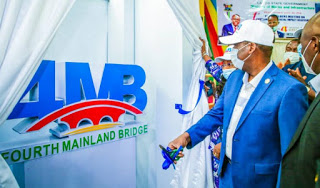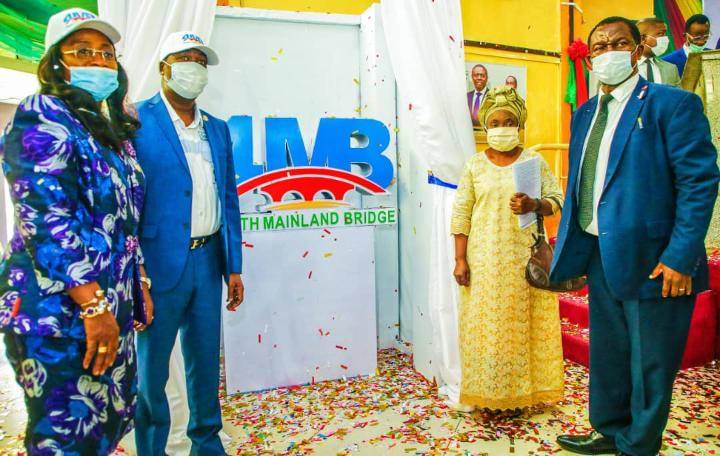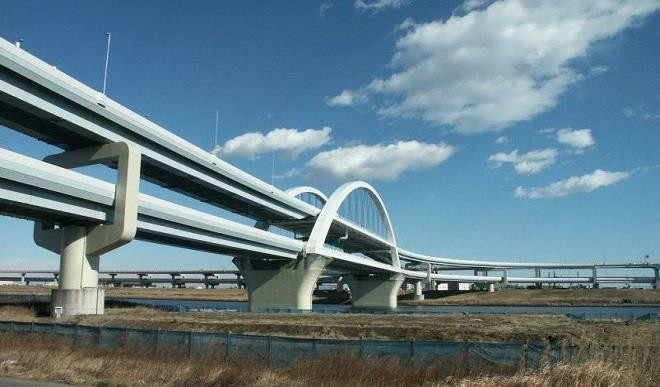The Lagos State Government has proposed the sum of $2.2 billion for the construction of the 37.4 kilometres 4th Mainland Bridge.
When completed, the bridge would have a 2 x 4 lane carriageway cross-sectional road with allowance for BRT Lane and future road expansion.
800 houses are also expected to be demolished when construction begins against the 4,000 houses earlier marked for demolition in the previous design before it was realigned.
It would also become the longest Bridge in Africa second only to the 6th October Bridge in Cairo, Egypt, featuring three toll plazas, nine interchanges, 4.5Km Lagoon Bridge, Rest and Service Areas and an eco-friendly environment amongst other added features.
Governor Babajide Olusola Sanwo-Olu disclosed this Tuesday at the first stakeholders meeting on Environmental and Social Impact Assessment (ESIA) for the bridge held at Adeyemi Bero Hall, Ikeja.
The freeway bridge is subdivided into three sections namely Island Section, Lagoon Section and Mainland Section.
It starts at the Abraham Adesanya Roundabout in Lekki where a “free flow” interchange will be constructed as well as some traffic flow alterations to the existing Lekki – Epe Expressway so as to maintain traffic movements during construction.
READ ALSO: Lagos reduce ferry fare by 60% to celebrate independence
Sanwo-Olu, represented by his deputy, Dr Obafemi Hamzat disclosed that the event is very significant in the state’s joint effort to change the narrative of the socio-economic development of the state through the provision of critical infrastructure for sustainable prosperity.

He stressed that the 4th Mainland Bridge project was deliberately included during their electioneering campaign as a key deliverable in their manifesto.
As an administration, he said, the government decided to upgrade the project and develop a method to deliver “this strategic piece of highway infrastructure and have since left no one in doubt about our commitment to ensure that this project becomes a reality.”
According to him, the history of the 4th Mainland Bridge project goes back almost 15 years when it was first raised due to the ever-decreasing efficiency of the existing 3rd Mainland Bridge in addressing the transportation needs of a growing population.
He described the 3rd Mainland Bridge as the first real piece of strategic infrastructure deployed in Lagos Metropolis and the proponents and developers of that project should be commended for their vision.
Hamzat stressed that engagement and consultation on Environmental and Social impact assessment is a precursor to the third step which will involve issuing a “Request for Proposal” (RfP), to the six Consortia who will be required to present their respective financial proposals and methodologies for carrying out the project.

It will be concluded with the selection of the “Preferred Bidder” and “2 Reserved Bidders”.
He urged stakeholders to use the meeting to consult amongst themselves on the steps to take in order to remove all the bottlenecks that may impede the delivery of 4th Mainland Bridge.
READ ALSO: President Buhari inaugurates 326km Itakpe-Ajaokuta-Warri rail line
All the components of Lagos mobility, he said must be considered, including Road planning, public transport integration and urban freight;
Strengthening the current radial commuting connections towards Lagos urban core and the establishment of transversal connections that will serve both long-distance traffic (avoiding the metropolitan traffic) and also other connections within the Megacity which are not Lagos bound.
He assured that the proposed 4th Mainland Bridge project has been well integrated into the overall Lagos Master Plan in relation to Transportation Infrastructure.
The project allows for the first time “direct access” from the large suburb of Ikorodu to the Island and the Lekki Free Trade Zone area.













